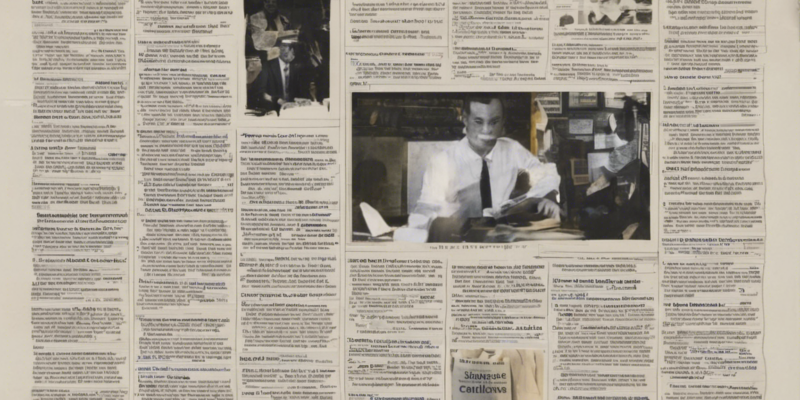As an avid puzzler, navigating the iconic New York Times crossword adds an intellectual challenge and a sense of accomplishment to your day. The intricate web of clues, themes, and wordplay incorporated in these puzzles can sometimes feel like deciphering a cryptic code. For both beginners and seasoned solvers, cracking the NY Times crossword requires a blend of skill, strategy, and a dash of creativity. Unlock the mysteries of NY Times crossword connections with these tips and tricks that will elevate your puzzling experience to new heights.
Understanding Crossword Grid Patterns
Before diving into solving clues, it’s important to get familiar with the structural elements of a crossword grid. Recognizing common grid patterns such as black squares configurations, theme entries placements, and symmetrical layouts can provide valuable insights into solving the puzzle more efficiently.
Tip 1: Start with the Theme
Identifying the theme is crucial in many NYT crosswords as it can help you solve other, often trickier, clues related to it. Themes can be anything from wordplay, puns, hidden words, or even letter patterns that tie the puzzle together.
Tip 2: Work on the Crosses
If you’re stuck on a particular clue, look at the intersecting words (crosses) to see if they provide any hints. Sometimes solving one word can unlock several others, ultimately aiding you in completing the puzzle faster.
Mastering Crossword Clue-solving Strategies
NY Times crosswords feature a variety of clue types ranging from straightforward definitions to cryptic wordplays. Developing a repertoire of clue-solving strategies can significantly boost your solving speed and accuracy.
Tip 3: Embrace Abbreviations and Contractions
Learn commonly used abbreviations and contractions such as “abbr.” for abbreviation, “b4” for before, or “say” for for example. These shortcuts frequently appear in crossword clues and can provide valuable hints.
Tip 4: Utilize Wordplay Techniques
Many clues in NY Times crosswords involve wordplay such as anagrams, homophones, and puns. Being attuned to these linguistic devices can help you crack tricky clues more easily.
Leveraging Crossword-solving Tools
While purists may stick to pen and paper, modern technology offers a plethora of crossword-solving tools and resources to aid solvers in their quest for completion. These tools can range from online puzzle-solving platforms to crossword dictionaries and anagram solvers.
Tip 5: Online Crossword Platforms
Platforms like NYT Crossword provide a digital space to solve the daily puzzles, access archives, and compete with other solvers. These platforms often offer hints, timers, and additional features to enhance the solving experience.
Tip 6: Crossword Dictionaries
Crossword-specific dictionaries like Merriam-Webster’s Crossword Puzzle Dictionary can be valuable companions, especially when dealing with obscure words, proper nouns, or foreign terms commonly found in NYT crosswords.
Etiquette and Best Practices for Crossword Solvers
Solving a crossword is not just about unlocking the answers but also about fostering a sense of sportsmanship and community within the puzzling world. Following certain etiquette guidelines and best practices can help you become a respected and admired member of the crossword-solving community.
Tip 7: Avoid Spoilers
In online forums or discussion groups, refrain from sharing direct answers or detailed hints that could spoil the puzzle for others who are still solving. Instead, focus on discussing clue-solving strategies, theme interpretations, and general insights.
Tip 8: Embrace Collaboration
Solving crosswords with friends, family, or online groups can add a collaborative element to the solitary activity. Sharing different perspectives and approaches can lead to creative solutions and a deeper appreciation of the puzzle.
FAQs:
Q1: How can I improve my crossword-solving speed?
A1: Practice regularly, focus on building your vocabulary, and familiarize yourself with common crossword clue patterns to enhance your speed.
Q2: What do the numbers in parentheses following some clues mean?
A2: The numbers indicate the total number of letters in the answer for that clue. For example, (4) would mean a 4-letter word.
Q3: Is it cheating to use crossword-solving tools or websites?
A3: Not at all! Crossword-solving tools are meant to enhance your experience and provide assistance when needed. They can help you learn new words and improve your solving skills.
Q4: How do I tackle obscure or uncommon crossword clues?
A4: Break down the clue into its components, look for wordplay or alternate meanings, and consider all possible interpretations until you find a suitable answer.
Q5: Can I solve the NYT crossword on my mobile phone or tablet?
A5: Yes, the NYT crossword app is available for both iOS and Android devices, making it convenient to solve puzzles on the go.
Delve into the intricacies of NY Times crossword connections with these tips, tricks, and best practices to elevate your puzzling prowess. With a strategic approach, a curious mindset, and a touch of creativity, you’ll soon find yourself effortlessly navigating the cryptic clues and unraveling the enigmatic themes that make NYT crosswords a beloved mental challenge. Happy solving!


Comments